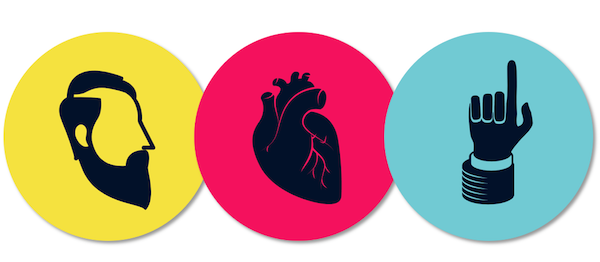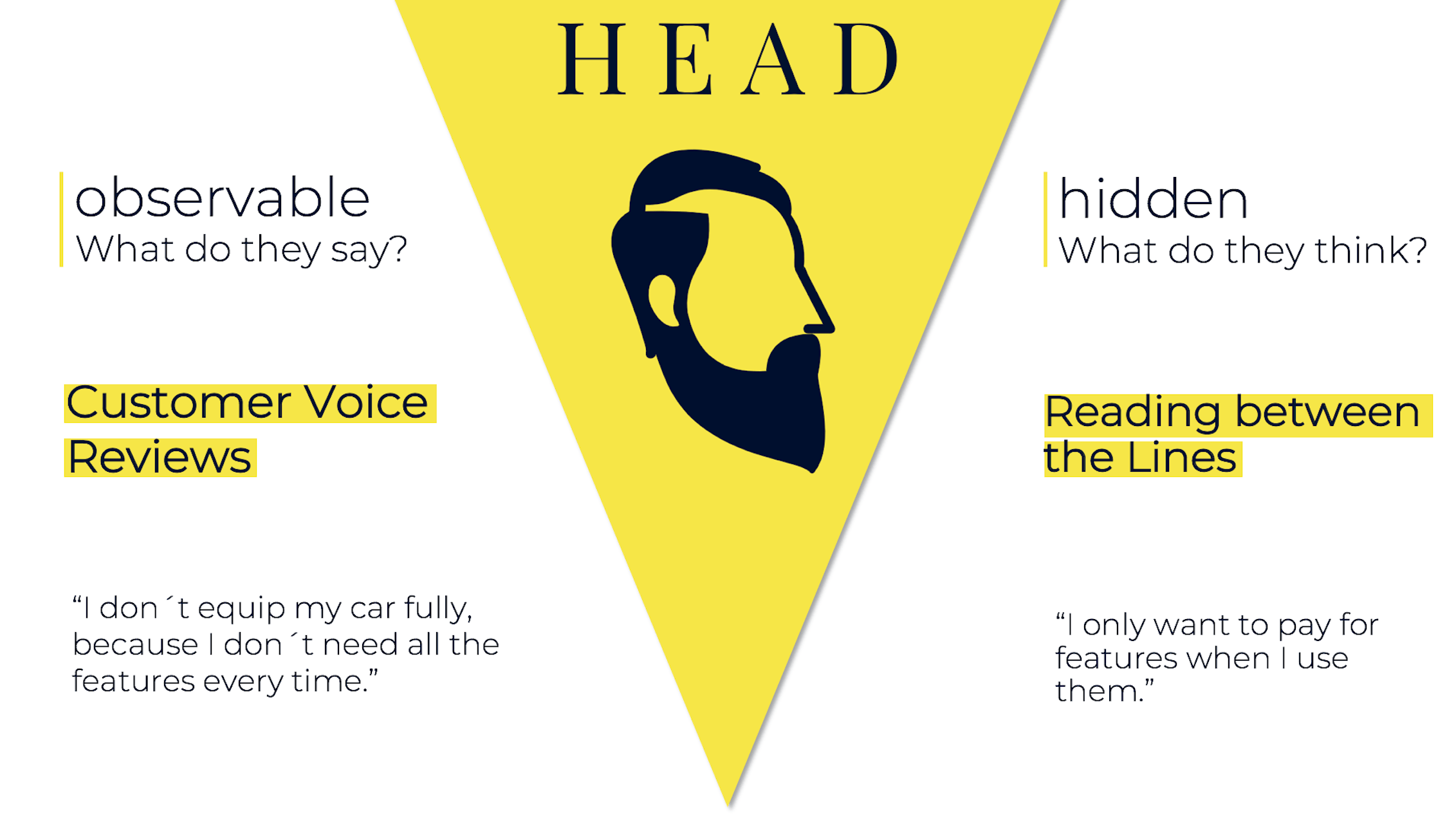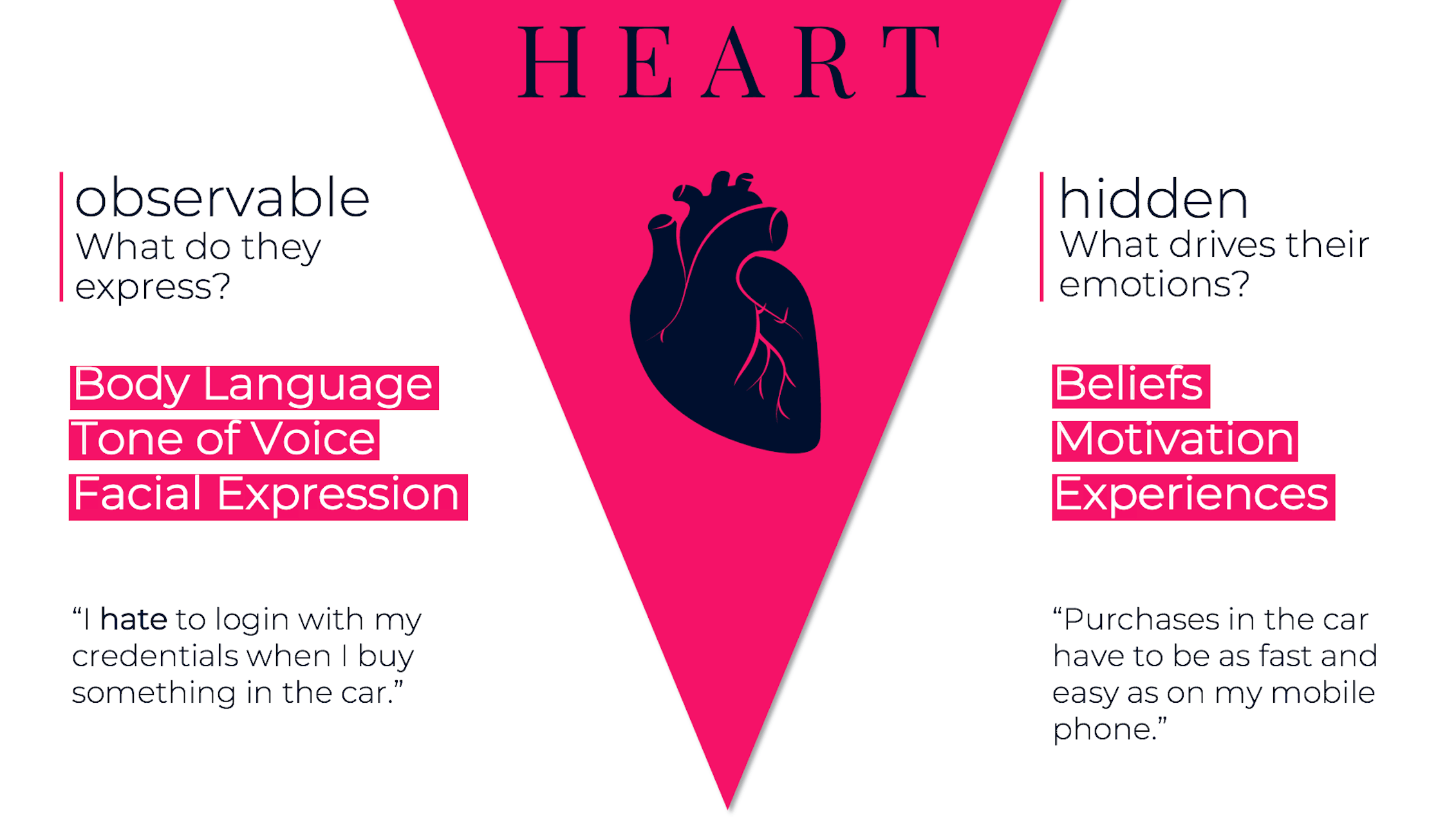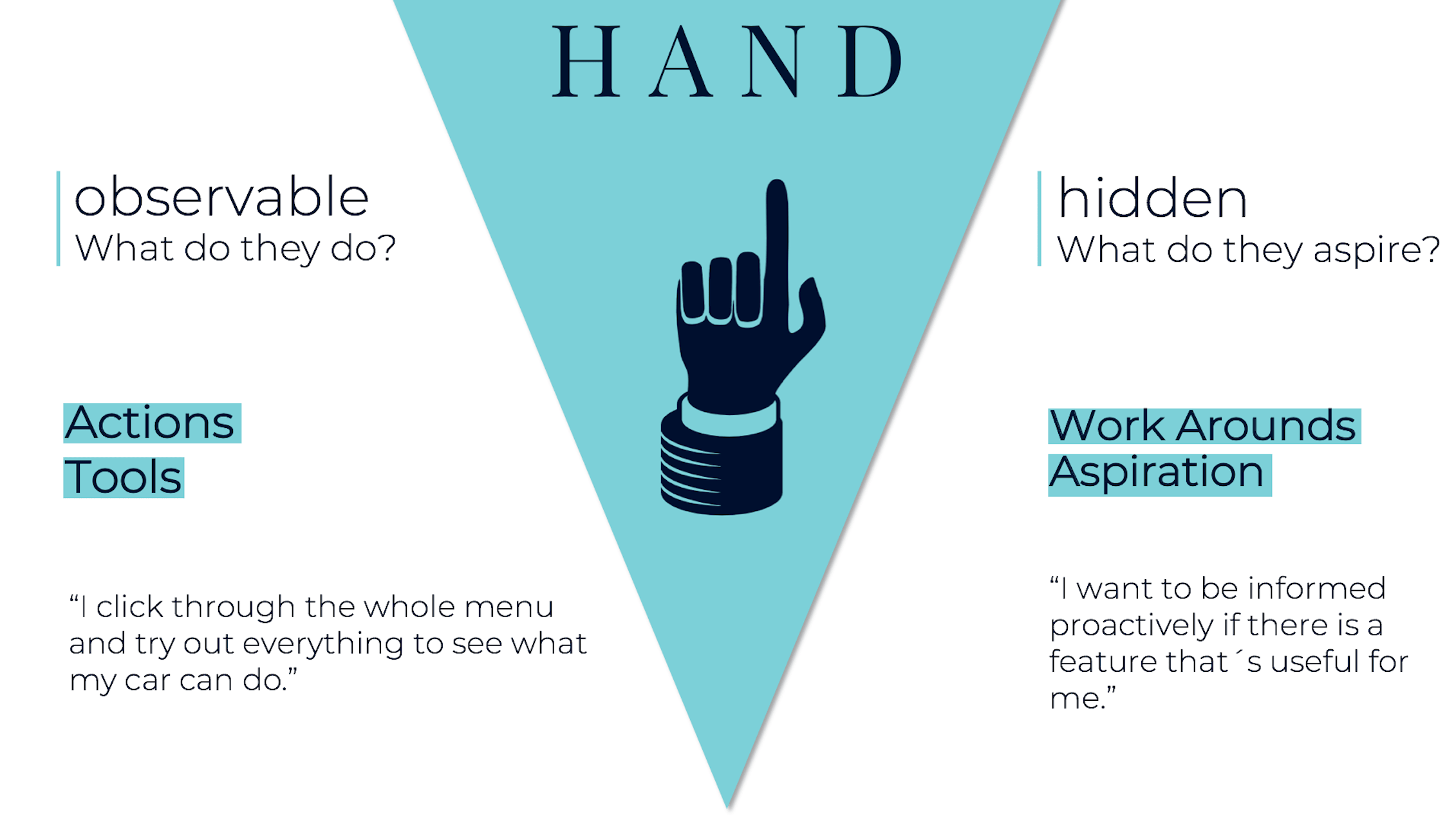08 Nov. The Trinity of Customer Centricity
Mind / Heart / Action
W hen you start working on a new product, the first thing you aim for: understanding your customer. The centre of everything you´ll be doing from now on. Ideally there has been conducted user research already, that you can make use of. There might even be personas, canvases and user journeys available. Lucky you! But what do you do if that´s not the case?
Indeed I found myself in that situation at some point, after having started in a new company. I was still lucky, because there has been at least some data, even though not much. Not the best starting point, but still no reason to bust your head in the sand. Here´s what helped me out.

The Trinity of Customer Centricity is an extremely simple, but effective method to gain a very first understanding of the most essential needs of your customer. It deals with the three central origins of user needs, Mind, Heart and Action, in the most fundamental way. Each part is elementary to get to your users´ core needs. You are always told to listen to your customer well – sure thing, but does it end here? You should pay attention to user emotions – yes, but how? And then you are asked to observe their behaviour – easy, eh? The Trinity of Customer Centricity helps to approach those three key factors systematically and efficiently. What you get is a sketch, a draft so to say, of your users´ core needs. This is your starting line!
There are two sides to consider for each part: the observable and the hidden. The observable side is apparently the easier one as it deals with everything that is obvious and directly recognizable. It looks at all the visible, clearly accessible and unmistaken information provided. The hidden side is a bit more tricky. Here we examine underlying and latent information that is not provided by the customer directly. You have to dig a bit deeper, uncover the disguising and interpret the given information.
MIND
The two central questions here: “What do your customers say?” and “What do they think?”. In many cases customers do not clearly state what they actually think. Clear, unquestionable statements and quotes are in focus for the observable side. It´s basically the customer voice. You can extract that information from interviews or reviews that users provide e.g. in the app store or on platforms. You could also simply sit next to a customer service team member and listen to user feedback by yourself. The important point here is not to interpret any statements.
This is what the hidden side deals with. Get down to what your customer intended to say by reading between the lines of what was actually said. Find the statement roots and extract the unsaid. This not an easy task, but very crucial, as the most valuable information lies underneath verbalized statements.
HEART
The emotional component looks at your customers´ expressions and the underlying drivers for feelings and mental states. On the one hand focus on “What are they expressing?”, and then dig deeper by asking “What drive their emotions?”. Pay attention to noticeable reactions through body language and facial expressions, but also the tone of voice reveals information about feelings. Listen carefully which exact words they´re using e.g. “I love”, “I hate”, “I feel super happy every time when…”, and how the voice unfolds when they´re talking about a certain situation or product. Does the voice get louder, tremulous or excited?
Afterwards move to the hidden aspects that drive those emotions. Feelings and emotions evolve due to experiences we make, beliefs that we have and motivations that drive us. Talking to a young mother is a completely different story than talking to a 20-year-old student. Our attitude towards certain situations is determined by those aspects. Thus, it´s essential to get behind obvious expressions and create an understanding of the true driving forces. Your goal should be to get an understanding of hopes and fears, what causes headaches for your customer and what sets them in a positive mood?
ACTION
Finally, it´s all about the actual doings of your customers. One the one hand you observe their behavior in certain situations to answer “What do they do?”. Look carefully which tools they are using and how they deal with a certain situation. Which steps are they taking in order to achieve their goal? Behavioral maps are a great support here. Place all steps that your customers take as little scribbles or descriptions on the wall and mark every action they take e.g. clicking buttons on webpages or searching for change money in their purse when buying a coffee, depending on your product. Then secondly, look behind the scenes and determine carefully whether the actions they take are the ones that are necessary in order to achieve their goal. Ask “What´s their aspiration?”. Are they probably using work arounds and aim at something completely different? For example, I observed people wrapping up their coffee-to-go in a scarf to keep it warm while walking or driving. That´s a clear workaround for the actual intention to have a warm coffee at any time.
Great, well done! We gained a good understanding of what drives our customers in terms of thoughts, emotions and actions. As mentioned early this is a first sketch. You should take those findings now as input for further methodologies e.g. extract pain points or Jobs To Be Done for a Customer Value Canvas, describe personas or simply point out where there is a lack of information and more research is needed. It´s your starting point to hit the road towards Customer Centricity.
Written by Sabrina Rzepka
.
- – sharing is caring –



